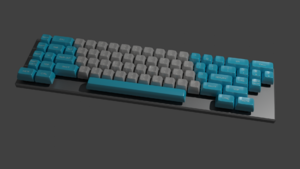Difference between revisions of "CADR"
From Computer History Wiki
m (add Knight TV kbd image) |
m (+AI Memo 528) |
||
| Line 7: | Line 7: | ||
==External links== | ==External links== | ||
| + | * [http://www.unlambda.com/cadr/aimemo528_75pgs.pdf CADR] - AI Memo 528 | ||
| + | * [https://github.com/hanshuebner/cadr2/tree/master/mit cadr2/mit/] - much MIT CADR material | ||
* [http://www.unlambda.com/index.php?n=Main.Cadr Retrocomputing - MIT CADR Lisp Machines] - Includes emulator, complete sources, and bootable disk images | * [http://www.unlambda.com/index.php?n=Main.Cadr Retrocomputing - MIT CADR Lisp Machines] - Includes emulator, complete sources, and bootable disk images | ||
| − | |||
| − | |||
| − | |||
| − | |||
* [https://tumbleweed.nu/lm-3/ LM-3] - ' LM-3 --- resurrecting the MIT CADR' | * [https://tumbleweed.nu/lm-3/ LM-3] - ' LM-3 --- resurrecting the MIT CADR' | ||
** [https://tumbleweed.nu/lm-3/history.html Lisp Machine System Release History] | ** [https://tumbleweed.nu/lm-3/history.html Lisp Machine System Release History] | ||
** [https://tumbleweed.nu/lm-3/lmman-editions.html Lisp Machine Manual Editions] | ** [https://tumbleweed.nu/lm-3/lmman-editions.html Lisp Machine Manual Editions] | ||
| + | * Images | ||
| + | ** [http://www.stupi.se/Bilder/pdp-10/jpg1/dscn2952.jpg CPU] | ||
| + | ** [http://www.stupi.se/Bilder/pdp-10/jpg1/dscn2949.jpg CPU backplane] | ||
| + | ** [http://www.stupi.se/Bilder/pdp-10/jpg1/dscn2945.jpg I/O box] | ||
{{semi-stub}} | {{semi-stub}} | ||
[[Category: Workstations]] | [[Category: Workstations]] | ||
Revision as of 20:23, 27 January 2023

The Knight keyboard was used with the MIT-AI ITS machine and CADRs; this is a rendition of the layout
The CADR was the first successful LISP machine, built by the MIT AI Lab as a follow-on to the prototype CONS machine.
Physically, the microcoded CPU was a single huge wire-wrap swing-out bay mounted in the front of an H960 rack. A separate backplane held main memory cards, I/O cards, etc.
External links
- CADR - AI Memo 528
- cadr2/mit/ - much MIT CADR material
- Retrocomputing - MIT CADR Lisp Machines - Includes emulator, complete sources, and bootable disk images
- LM-3 - ' LM-3 --- resurrecting the MIT CADR'
- Images